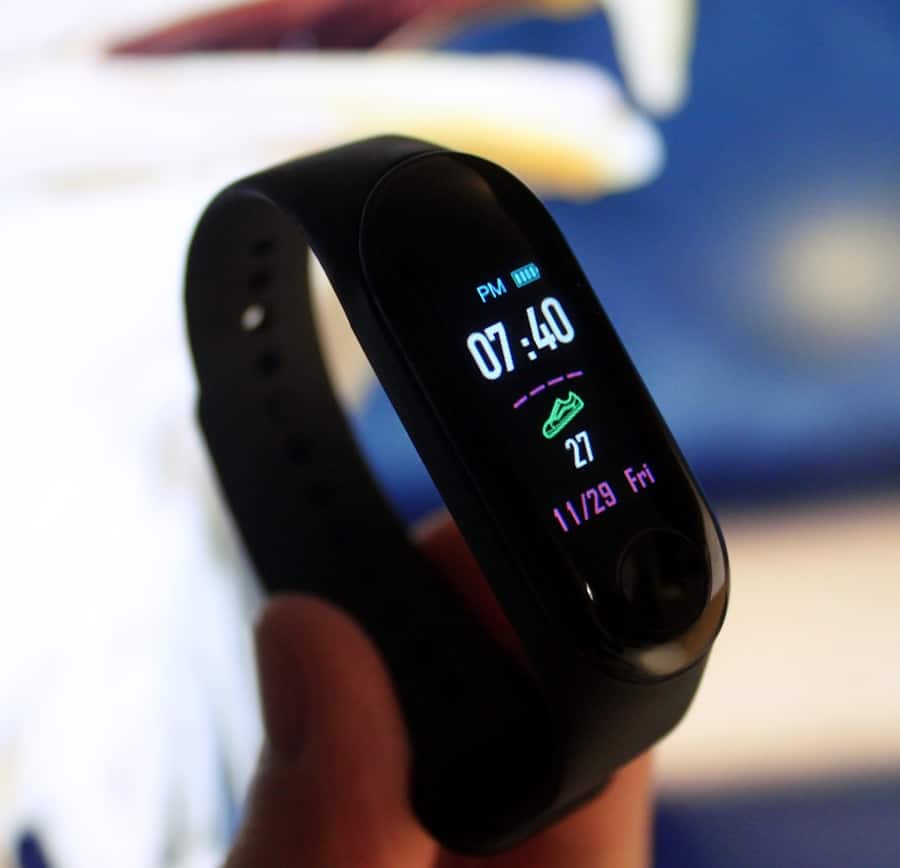In recent years, the proliferation of smart wearables has transformed the landscape of personal health monitoring. These devices, which include smartwatches, fitness trackers, and health bands, have become increasingly sophisticated, integrating advanced technology to provide users with real-time data about their health and fitness. The rise of smart wearables is not merely a trend; it represents a significant shift in how individuals approach their health management.
By leveraging sensors and algorithms, these devices can track various physiological parameters, offering insights that were once only available through clinical assessments. The appeal of smart wearables lies in their accessibility and convenience. Unlike traditional health monitoring methods that often require visits to healthcare facilities, smart wearables empower users to take charge of their health from the comfort of their homes.
This democratization of health data has the potential to enhance awareness and encourage proactive health behaviors. As these devices continue to evolve, they are increasingly being recognized for their role in detecting early signs of chronic conditions, particularly heart disease, which remains one of the leading causes of morbidity and mortality worldwide.
Key Takeaways
- Smart wearables are devices that can be worn on the body to track health and fitness data.
- Early signs of heart disease can be detected through changes in heart rate, blood pressure, and activity levels.
- Early detection of heart disease is crucial for timely intervention and prevention of complications.
- Smart wearables work by using sensors to monitor physiological parameters and sending data to a connected device for analysis.
- Examples of smart wearables include smartwatches, fitness trackers, and chest straps with heart rate monitors.
Early Signs of Heart Disease
Recognizing Early Signs
Common early signs include symptoms such as shortness of breath, fatigue, and chest discomfort, which can easily be overlooked or attributed to other causes. More subtle indicators may include irregular heartbeats or changes in blood pressure that might not be immediately noticeable without regular monitoring.
Lifestyle Factors and Risk
For instance, a gradual increase in resting heart rate or a decrease in exercise tolerance can signal underlying cardiovascular issues that warrant further investigation. Moreover, lifestyle factors such as obesity, smoking, and sedentary behavior significantly contribute to the risk of developing heart disease. These risk factors can manifest in measurable ways, such as elevated cholesterol levels or increased blood pressure.
The Role of Smart Wearables
Recognizing these early signs is essential for individuals at risk, as timely intervention can lead to lifestyle modifications or medical treatments that can significantly alter the disease’s trajectory. Smart wearables play a pivotal role in this context by providing continuous monitoring and alerts that can help users identify these early warning signs before they escalate into more serious health issues.
Importance of Early Detection

The importance of early detection in heart disease cannot be overstated. Research indicates that timely identification of cardiovascular risk factors can lead to improved outcomes and reduced mortality rates. For instance, studies have shown that individuals who receive early treatment for hypertension or high cholesterol are less likely to experience severe cardiovascular events such as heart attacks or strokes.
Early detection allows for lifestyle changes, medication adjustments, and regular monitoring, all of which can significantly mitigate risks associated with heart disease. Furthermore, early detection fosters a proactive approach to health management. Individuals who are aware of their cardiovascular health status are more likely to engage in preventive measures such as adopting healthier diets, increasing physical activity, and adhering to prescribed medications.
This shift from reactive to proactive healthcare not only benefits individual patients but also alleviates the burden on healthcare systems by reducing the incidence of advanced disease stages that require more intensive and costly interventions. In this context, smart wearables serve as invaluable tools that facilitate ongoing health monitoring and encourage users to take an active role in their cardiovascular health.
How Smart Wearables Work
Smart wearables utilize a combination of sensors, algorithms, and connectivity features to monitor various health metrics continuously. At the core of these devices are sensors that measure physiological parameters such as heart rate, blood pressure, oxygen saturation, and even electrocardiogram (ECG) readings. For example, optical sensors use light to detect blood flow changes beneath the skin, allowing for accurate heart rate monitoring during rest and physical activity.
Advanced models may also incorporate electrodes to capture electrical signals from the heart, providing insights into its rhythm and function. The data collected by these sensors is processed using sophisticated algorithms that analyze trends and patterns over time. This analysis enables the device to provide users with actionable insights regarding their cardiovascular health.
For instance, if a user’s resting heart rate shows an unusual increase over several days, the device may prompt them to consult a healthcare professional. Additionally, many smart wearables are equipped with connectivity features that allow them to sync with smartphones or cloud-based platforms, enabling users to track their health data over time and share it with healthcare providers for further evaluation.
Examples of Smart Wearables
The market for smart wearables is diverse, with numerous devices tailored for different user needs and preferences. One prominent example is the Apple Watch, which has gained recognition for its comprehensive health monitoring capabilities. The latest models feature an ECG app that allows users to take an electrocardiogram directly from their wrist, providing critical information about heart rhythm and potential arrhythmias.
Additionally, the Apple Watch tracks heart rate variability and alerts users to irregular heart rhythms, making it a powerful tool for early detection of heart issues. Another notable example is the Fitbit series of fitness trackers, which focus on promoting an active lifestyle while also monitoring heart health. Devices like the Fitbit Charge 5 offer continuous heart rate tracking and SpO2 monitoring, allowing users to gain insights into their cardiovascular fitness levels.
The Fitbit app provides personalized recommendations based on user data, encouraging healthier habits that can reduce the risk of heart disease. Other brands like Garmin and Samsung also offer smart wearables with similar functionalities, catering to a wide range of consumers interested in maintaining their cardiovascular health.
Benefits of Using Smart Wearables for Heart Disease Detection

Continuous Monitoring for Early Detection
One significant advantage is the ability to monitor vital signs continuously without requiring invasive procedures or frequent visits to healthcare facilities. This continuous monitoring allows for real-time data collection, enabling users to identify trends that may indicate potential health issues before they become critical.
Personalized Feedback and Motivation
For instance, a sudden spike in resting heart rate during periods of inactivity could signal underlying cardiovascular stress. Moreover, smart wearables promote greater engagement in personal health management by providing users with immediate feedback on their lifestyle choices. Many devices come equipped with features that encourage physical activity through reminders and goal-setting functionalities.
Empowering Informed Health Decisions
This gamification aspect not only motivates users to stay active but also fosters a sense of accountability regarding their health behaviors. By making health data accessible and understandable, smart wearables empower individuals to make informed decisions about their lifestyle choices and seek medical advice when necessary.
Limitations and Challenges
Despite the numerous advantages offered by smart wearables in detecting heart disease, there are inherent limitations and challenges associated with their use. One primary concern is the accuracy of the data collected by these devices.
For example, wrist-based heart rate monitors may struggle with accuracy during high-intensity workouts or when the device is not fitted correctly. Another challenge lies in data interpretation and user understanding. While smart wearables provide valuable insights into health metrics, users may misinterpret this information without proper context or guidance from healthcare professionals.
The potential for alarm fatigue is also a concern; if users receive frequent alerts about minor fluctuations in their data, they may become desensitized to important warnings about significant changes in their cardiovascular health. Therefore, it is crucial for manufacturers to ensure that their devices not only provide accurate data but also offer clear guidance on how users should respond to various alerts.
Future of Smart Wearables in Heart Disease Detection
The future of smart wearables in heart disease detection appears promising as technology continues to advance at an unprecedented pace. Innovations in sensor technology are expected to enhance the accuracy and range of physiological measurements that these devices can capture.
Such advancements could significantly improve the ability of smart wearables to detect early signs of hypertension—a major risk factor for heart disease. Additionally, the integration of artificial intelligence (AI) into smart wearables holds great potential for personalized health monitoring. AI algorithms can analyze vast amounts of data from multiple users to identify patterns that may not be apparent through traditional analysis methods.
This capability could lead to more accurate predictions regarding individual risk factors for heart disease based on lifestyle choices and genetic predispositions. As smart wearables become more sophisticated and interconnected with other digital health platforms, they will likely play an increasingly central role in preventive healthcare strategies aimed at reducing the burden of heart disease globally.
Smart wearables have revolutionized the way we monitor our health, with devices now capable of detecting early signs of heart disease. This technology is paving the way for proactive healthcare and early intervention. In a related article,

